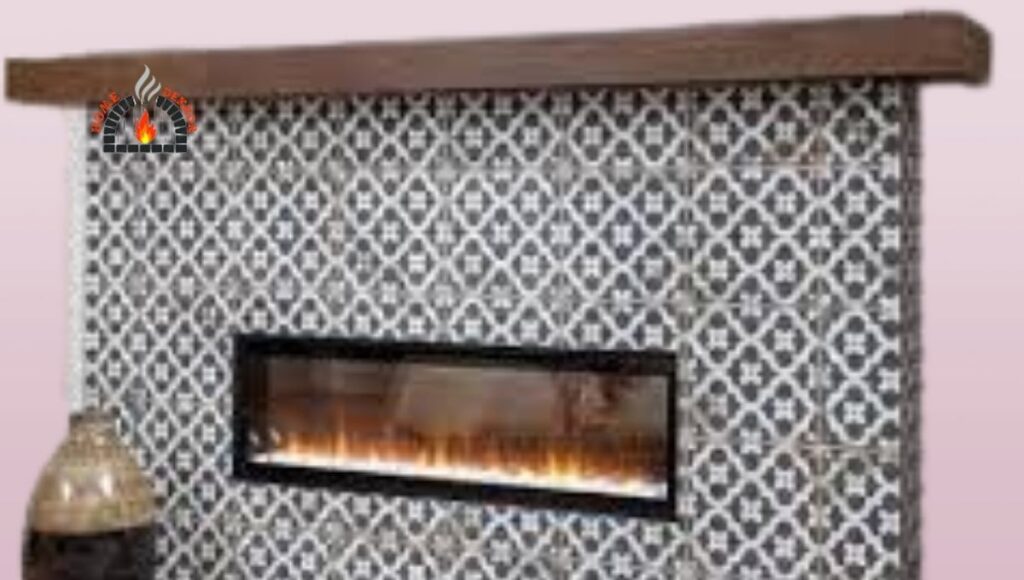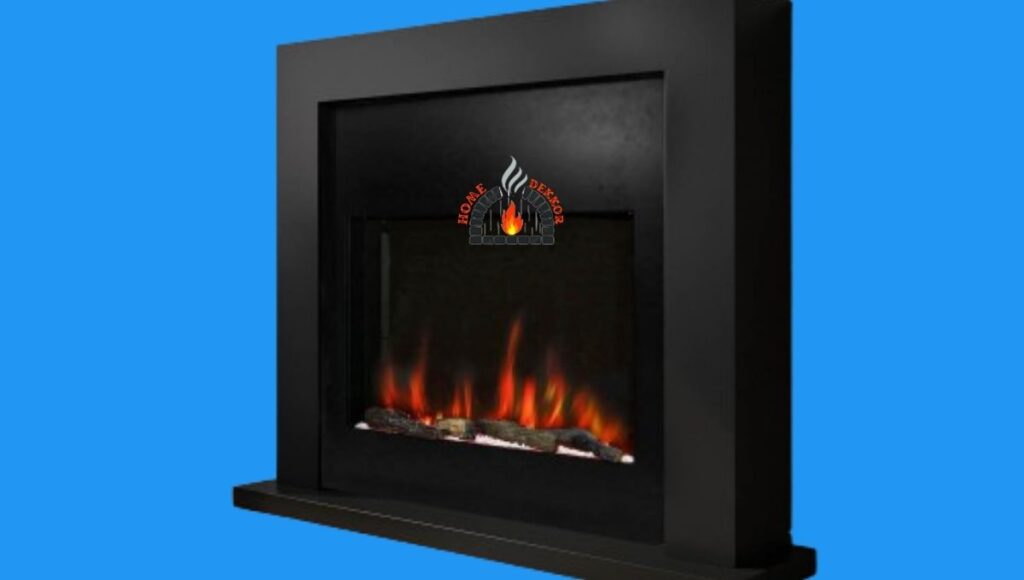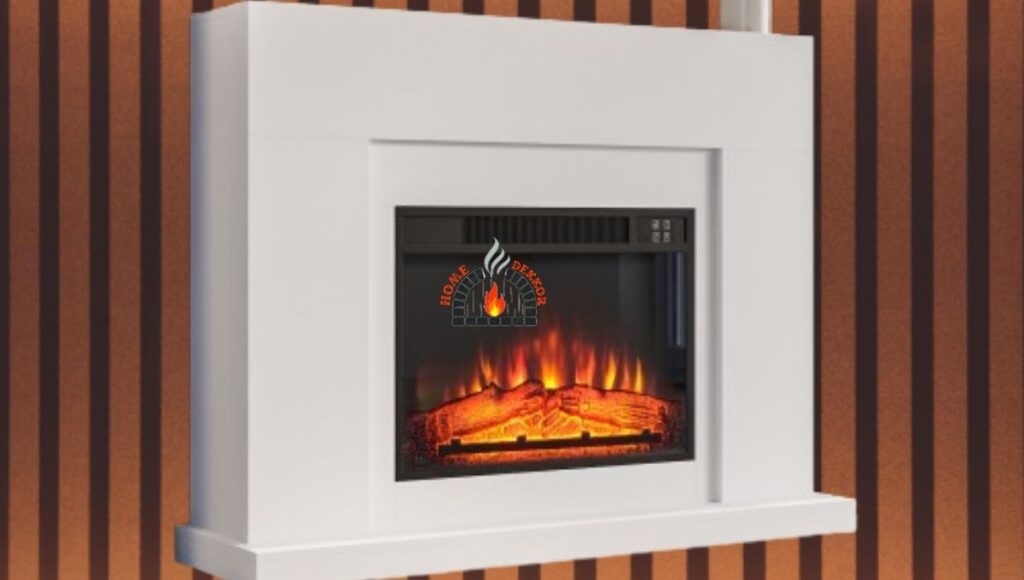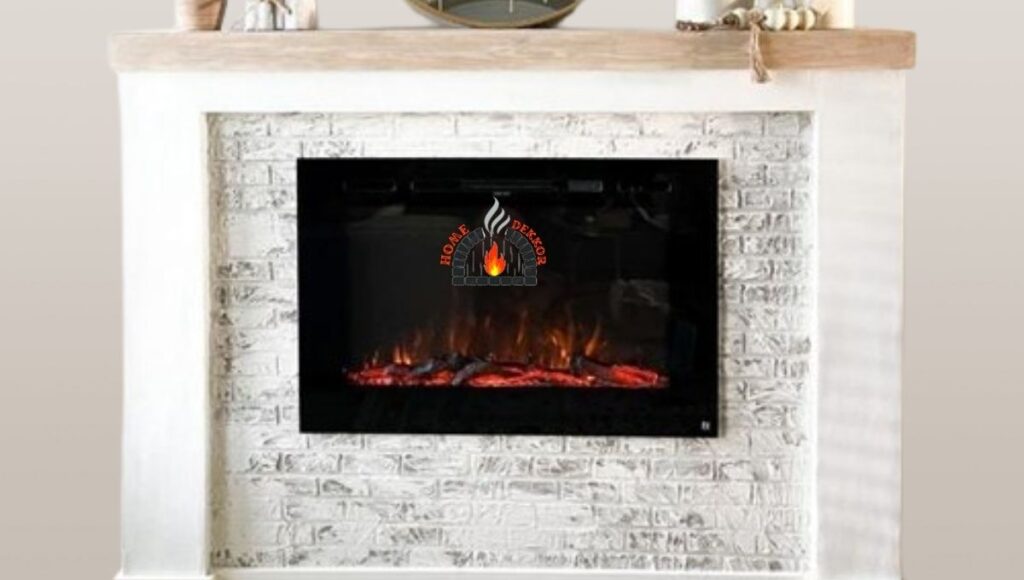Simplicity and Style with Electric Fireplaces: Electric fireplaces bring a touch of elegance and convenience to any living space. With their instant functionality, they’re a hassle-free addition to your home decor.

As the name implies, these fireplaces operate on electricity, but can they be plugged into any standard outlet?
Connecting Your Electric Fireplace: If your electric fireplace comes equipped with a power cord, then yes, it can be effortlessly plugged into a standard power outlet.
However, it’s worth noting that specific models may have alternative connection methods, which are typically addressed during the fireplace’s installation process.
Considerations for Proper Installation: While the ease of plugging in your electric fireplace is a notable advantage, it’s important to keep a few key considerations in mind:
Power Cord and Outlet Compatibility: Ensure that the power cord of your electric fireplace matches the type of outlet you intend to use.
Alternate Connection Methods: In certain cases, specific models may require alternative installation methods. This is typically determined by the manufacturer’s guidelines.

Plugging Your Electric Fireplace into a Standard Outlet: What You Need to Know
Easy Connection for Standard Electric Fireplaces: If your electric fireplace comes with a standard power cord, then you’re in luck! These fireplaces are designed to be effortlessly plugged into any regular outlet. They typically come with a 120-volt plug that fits into standard outlets found in most homes.
Important Tip: Avoid Extension Cords or Power Strips: While it may be tempting, it’s crucial to refrain from plugging your electric fireplace into an extension cord or power strip. These devices are not equipped to handle the high power draw of an electric fireplace, which can lead to safety hazards.
Understanding How Electric Fireplaces Operate: Unlike traditional fireplaces, electric fireplaces do not produce an actual flame. Instead, they create the illusion of flames using a combination of lights and mirrors. The heat is generated by a dedicated heater unit. Because of this, treating your electric fireplace as you would any other heating unit is essential.

Why It Matters: Using an extension cord meant for smaller devices like computers or phone chargers can potentially lead to damage when used with a high-powered heating unit like an electric fireplace.
Selecting the Right Electric Fireplace: When shopping for an electric fireplace, be sure to look for models labeled as “plug-ins,” indicating their compatibility with regular outlets. In rare cases where an electric fireplace requires direct wiring, a simple adapter can resolve the issue.
For Electric Fireplace Inserts Too: The same guidelines apply to electric fireplace inserts. Unless otherwise specified, most inserts can be conveniently plugged into a standard outlet. This information is typically highlighted in the product packaging or user’s manual.
Understanding Power Requirements for Built-In Electric Fireplaces

Built-In Fireplaces: A Unique Power Demand: Unlike standalone electric fireplaces, built-in models typically require a specific approach. They are designed to be hard-wired directly into your home’s electrical circuit, rather than plugged into an outlet. This distinction is crucial for a couple of reasons.
Voltage Matters: 240 Volt vs. 120 Volt: Built-in electric fireplaces commonly operate on a higher voltage, typically requiring 240 volts. In contrast, a standard American outlet provides 120 Volt. This voltage disparity means that attempting to plug a built-in fireplace into a standard outlet is not feasible.
Professional Installation: Ensuring Proper Connection: To ensure the safe and proper installation of your built-in fireplace, it’s imperative to rely on a professional installation service. This expert team will handle the process of hard-wiring the fireplace directly into your home’s power circuit.

Benefits of Hard-Wiring: A Clean Aesthetic: Apart from meeting electrical requirements, hard-wiring offers a sleek and uncluttered look. Without visible wires or cords, the built-in fireplace seamlessly integrates into your space.
Outlet Requirements for Various Electric Fireplace Types
For your reference, here’s a quick guide to outlet requirements for different types of electric fireplaces:
Electric Fireplace: Regular Outlet Build-In Electric Fireplace: Hard-Wired Electric Fireplace TV Stand: Regular Outlet Electric Fireplace Insert: Regular Outlet Electric Fireplace Heaters: Regular Outlet Electric Fireplace Log Sets: Regular Outlet Electric Fireplace Mantels: Regular Outlet

Final Tip: Consult Your Instruction Manual
Always consult your electric fireplace’s instruction manual for specific outlet requirements. It provides invaluable guidance to ensure proper installation and operation.
Understanding the Power Consumption of Electric Fireplaces
Standard Outlets and Voltage Requirements: Electric fireplaces are designed to operate on regular 120-volt outlets. They draw approximately 1500 Watts at 12.5 amps. However, it’s important to note that fireplaces requiring hard-wiring operate at 240 Volts and draw about 2500 Watts. These figures are based on average usage.
Plug-and-Play Convenience: The majority of electric fireplaces are designed to be easily plugged into a standard wall outlet, allowing them to function at 120 Volts. This draws a substantial yet reasonable amount of power, aligning with the standards of other common room heating devices.
Balancing Energy Usage: It’s worth mentioning that an electric fireplace essentially serves as a room heating system. When your electric fireplace is in operation, you may find that you don’t need to use an additional room heater. This results in a balance of energy consumption.

Heating Capacities: Electric fireplaces operating at 120 Volt typically emit around 5000 BTUs of heat, effectively warming an area of approximately 400-500 square feet. On the other hand, those operating at 240 Volt produce slightly more heat at 9000 BTUs, capable of warming an area of about 800 square feet.
Understanding the Electric Bill Impact of an Electric Fireplace
Calculating Electric Fireplace Costs: Based on the current average cost of $0.12 per kilowatt in the US, the typical electricity expense for running an electric fireplace is approximately $0.15 per hour. If your electric fireplace operates continuously for 24 hours, it would amount to $3.60 per day, equating to an annual cost of $1,314 at maximum usage.
Putting Costs into Perspective: While electric fireplaces do draw a noticeable amount of power, it’s important to note that this consumption is well within the standard range for room heating systems. Electric fireplaces often prove to be more energy-efficient than their counterparts.

Comparing Costs: Electric Fireplaces vs. Traditional Heaters: In the US, the average cost per kilowatt is around $0.12. Electric fireplaces typically consume slightly more than one kilowatt per hour, resulting in an average hourly cost of $0.15. In comparison, traditional electric room heaters average $0.20 per hour. This means that using an electric fireplace can be 25% more cost-effective.
Projected Costs: A Breakdown: Here’s a table illustrating the estimated costs per day, week, month, and year for running an electric fireplace continuously:
- Per Hour: $0.15
- Per Day: $3.60
- Per Week: $25.20
- Per Month: $108
- Per Year: $1,314

Potential Savings with an Electric Fireplace: Considering these figures, it’s common to observe a reduction in the electricity bill after installing an electric fireplace. The energy-efficient operation of these units often leads to cost savings.


